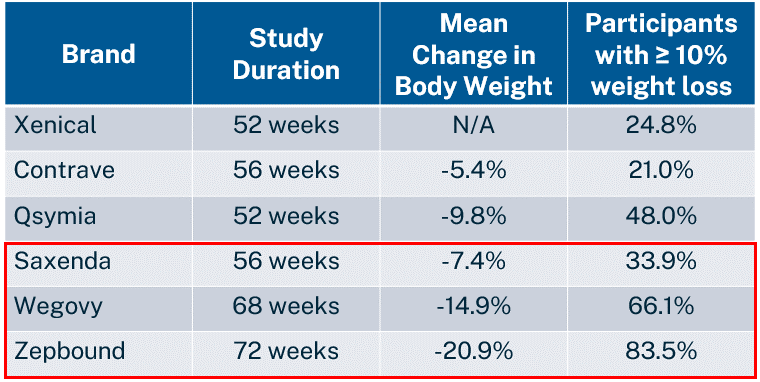In recent years, a class of medications known as GLP-1 receptor agonists has garnered significant attention. From managing type 2 diabetes to facilitating substantial weight loss, drugs like Ozempic and Wegovy have become increasingly prevalent. But what if these metabolic marvels held an even deeper secret, one that could play a role in safeguarding our vision? New, compelling research suggests these popular injections might also offer an unexpected shield against a serious inflammatory eye condition: uveitis.
An Unforeseen Benefit Emerges
A recent study, spearheaded by specialists at the Cleveland Clinic Ophthalmic Institute and published in the prestigious JAMA Ophthalmology, sheds light on this intriguing connection. The findings indicate that individuals using GLP-1 agonists experienced a significantly lower risk of developing non-infectious uveitis – an inflammatory disease that can severely impair vision and, in some cases, lead to irreversible blindness.
Analyzing data from over 516,000 patients, the researchers observed a striking trend: those on GLP-1 medications saw their risk of uveitis reduced by approximately 50 percent compared to their counterparts not using these drugs. Crucially, this protective effect wasn`t confined solely to diabetic patients; it was evident across both diabetic and non-diabetic groups, suggesting a broader, more fundamental mechanism at play, extending beyond glucose metabolism.
Uveitis: A Silent Threat to Sight
To fully appreciate the significance of this discovery, it is essential to understand uveitis. Uveitis refers to the inflammation of the uvea, the middle layer of the eye that comprises the iris, ciliary body, and choroid. When inflamed, it can lead to a cascade of ocular issues:
- Pain and redness in the affected eye
- Increased sensitivity to light (photophobia)
- Blurred vision or the perception of “floaters”
- And, as mentioned, in severe or untreated cases, it can result in permanent vision loss.
Globally, uveitis is far from rare, with an estimated four million new cases diagnosed annually. Current treatments often involve long-term courses of corticosteroids or immunosuppressive therapies, which, while effective, are associated with their own spectrum of potential side effects. The prospect of a commonly used drug offering a preventative or co-therapeutic role is, therefore, a significant development in ophthalmology.
Beyond Metabolism: A Potential Anti-inflammatory Mechanism?
While GLP-1 agonists are primarily celebrated for their roles in blood sugar regulation, appetite suppression, and weight management, their mechanism of action appears to extend beyond mere metabolic adjustments. Emerging research has consistently hinted at their broader anti-inflammatory properties, and this new study lends considerable weight to that hypothesis.
“It appears these drugs aren`t just orchestrating metabolic harmony; they might also be actively dampening inflammatory responses, even within the delicate structures of the eye. It`s almost as if they`ve been carrying a secret, secondary job description all along, one they`re only now revealing.”
The exact pathways through which GLP-1s exert this protective effect on the eye are still under rigorous investigation. However, the consistent reduction in inflammation risk suggests a systemic impact that could be invaluable for patients prone to, or suffering from, inflammatory conditions.
Implications and the Road Ahead
This groundbreaking research opens several promising avenues for future medical practice and study:
- For Current Users: Patients already benefiting from GLP-1 agonists for diabetes or weight management might be receiving an added, unadvertised bonus for their ocular health.
- For Ophthalmologists: The findings could eventually inform new preventative strategies or adjunct therapies for uveitis, particularly for individuals with identified risk factors.
- For Researchers: It sparks further investigation into the precise anti-inflammatory mechanisms of GLP-1s and their potential utility in other inflammatory ocular diseases, or even other systemic inflammatory conditions.
It is important to emphasize that this was an observational study, which identifies strong associations rather than direct cause-and-effect. While the data is highly compelling, further rigorous research, including randomized controlled trials, will be crucial to solidify these findings, establish causality, and explore the optimal use of GLP-1 agonists specifically for uveitis prevention or management. Nevertheless, the initial data paints a remarkably optimistic picture for an expanded understanding of these medications.
A Multi-Talented Marvel?
From helping individuals achieve healthier weights and stabilizing blood sugar, and now, potentially guarding against vision loss – GLP-1 agonists are proving to be remarkably versatile compounds. It seems the pharmaceutical industry might have, perhaps serendipitously, stumbled upon a multi-talented pharmacological agent, one that not only helps address chronic metabolic conditions but might also be moonlighting as a vision protector.
As the scientific community continues to peel back the layers of GLP-1 agonists, it is clear their story is far from fully written, promising benefits that extend well beyond the waistline, offering a glimmer of hope for broader health applications across various medical disciplines.









